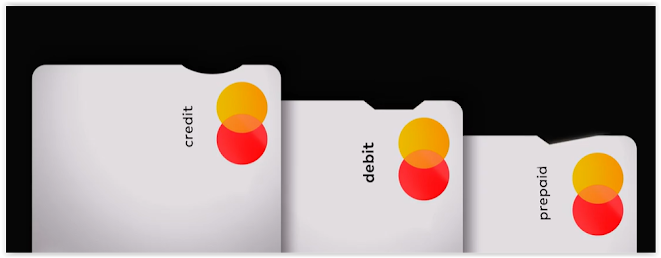Marketing in the News: Touch Card
I stumbled upon an ad called "Spotlight" while watching YouTube. It immediately caught my attention in the way it was both narrated and shot. This led me to explore further into these Touch Card products, which are a line of debit, credit, and prepaid cards that have specifically shaped notches on the side which indicates what type of card it is. Now for many people choosing what card to pay for a coffee with is an easy thing to do, but visually impaired people have to rely on other senses to distinguish between their payment options. In an article highlighting these products, it explains how the now seamless and modern cards make it more difficult for visually challenged people to tell what they're paying with. That's where Mastercard comes in. They're hoping that making cards that accommodate for the visually impaired will create a wider sense of independence and security around the world.
At the end of the commercial the narrator states that, "a world design for all of us, is Priceless." Now although this isn't Mastercard's value proposition, it seems as if it's very similar but just tweaked a little to fit this line of products. Diving further I noticed that they don't have one specific one, but rather multiple statements that include words like; innovation, connection, ambitions, and priceless.
The marketing campaign for these new Touch Cards involved an ad (the commercial that caught my attention in the first place) that was made to accommodate for people with visual impairments. The ad started by displaying the message in the picture to the right. It very clearly dictated that they want visually impaired people to be able to fully experience the commercial too. The ad followed a blind woman walking on a sidewalk. Only things that were making noise were illuminated in the ad with a spotlight. This shows how this woman perceived the world around her since she couldn't visualize what was going on.
Mastercard made a distinctive effort to make sure that the ad was able to be enjoyed by all audiences. This encompasses the mission they had about their new Touch Cards. Also, by making the ad adjustable to everybody they further drove home what they wanted their product to change. This is what their marketing campaign was set to accomplish.
Although the market for cards suited for visually impaired people is relatively small, Mastercard still had competition. For years many other companies made cards with braille on them to make it somewhat easy for people to tell which card is which. This is where the uniqueness of Mastercard's commercial comes in. They didn't make a line of cards to accompany the several other products that they offer. They instead created a new branch of cards, commercials, and ads. All to accompany visually impaired people and make their lives easier. Not only can a person get a Touch Card, but they can also listen to the ad for themselves and make their own decision, creating a more personal relationship between the company and the customer.
Another general critique I have isn't about this specific marketing campaign but about their value propositions. As stated before I found numerous different sentences describing what the company is about. I think they definitely could have consolidated them all into one single value proposition.
I first saw this ad before we were given the "Marketing in the News" assignment. I'm happy that I was able to go back, analyze and learn more about the whole marketing campaign. I learned that a professionally made, brilliantly crafted ad won't make a product successful, and through discovering that Mastercard didn't put out a lot of other content surrounding the Touch Cards, I found the part where the marketing team made a mistake. Although I believe that there wasn't enough content about the products, Mastercard still made a creative and inclusive story about a visually impaired woman, which appealed to people around the world.




.jpg)
Comments
Post a Comment